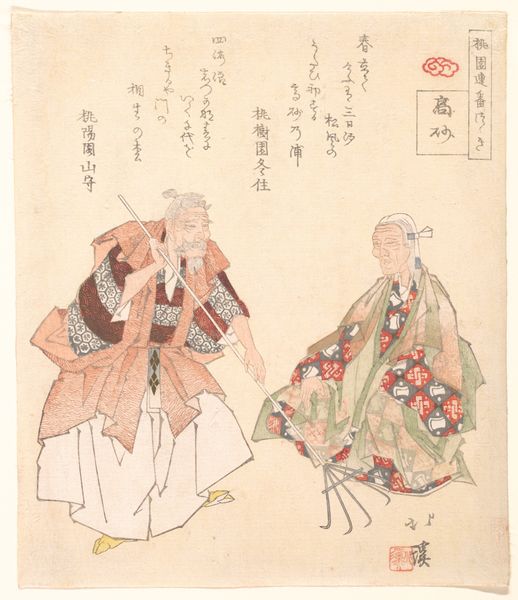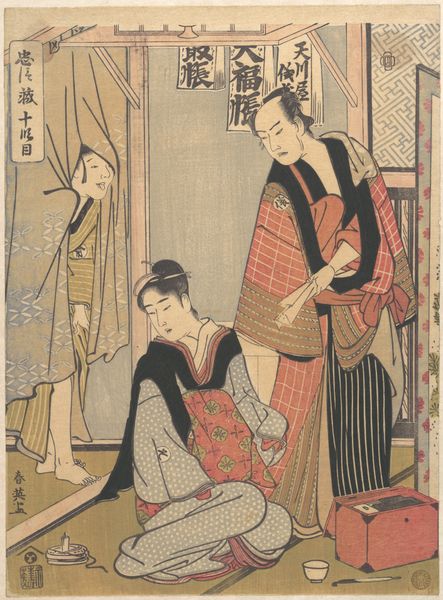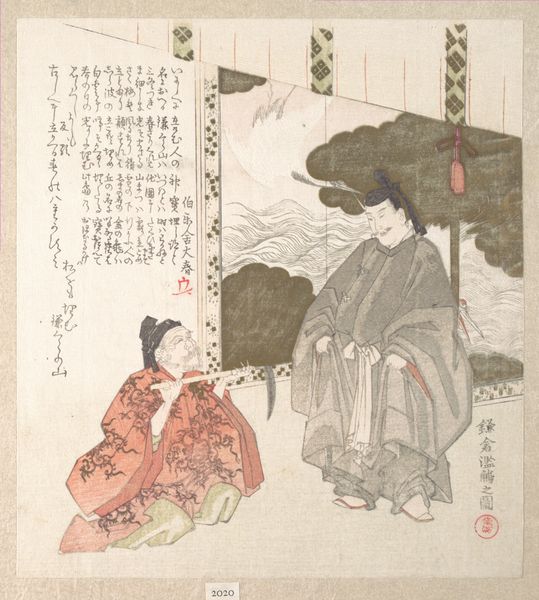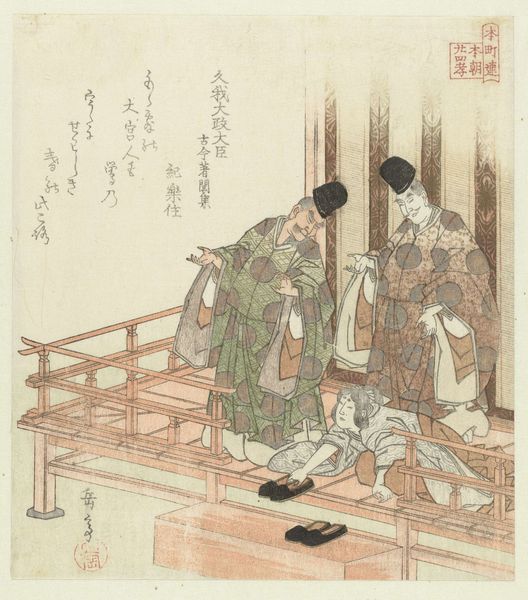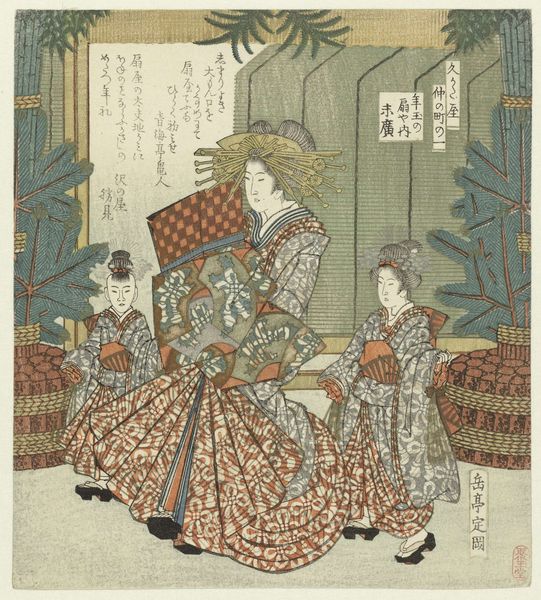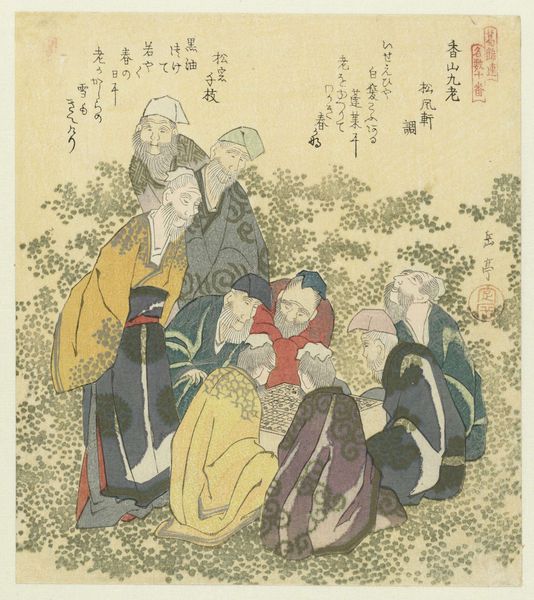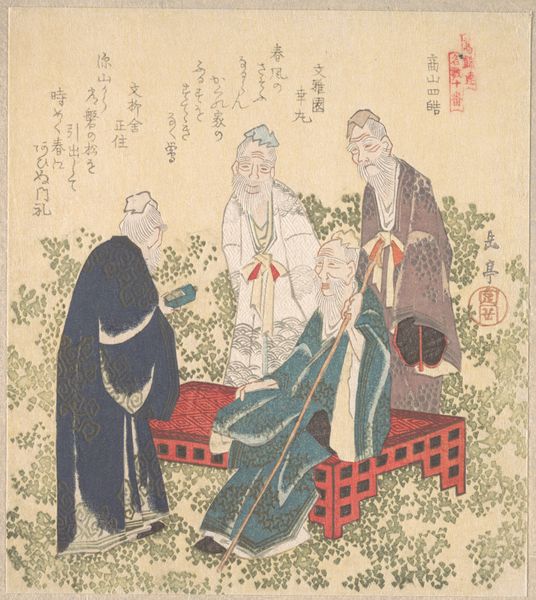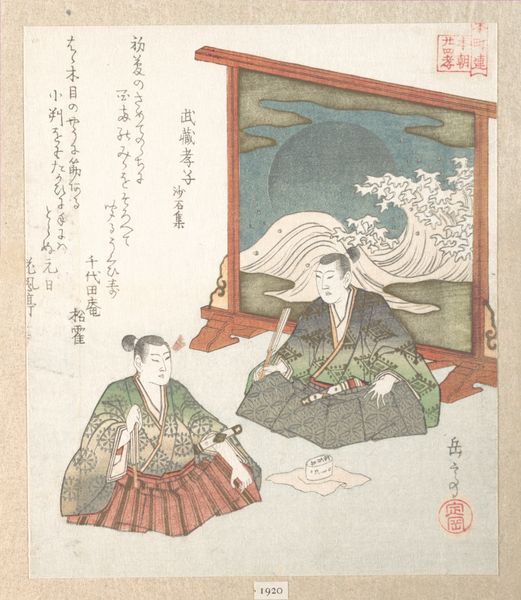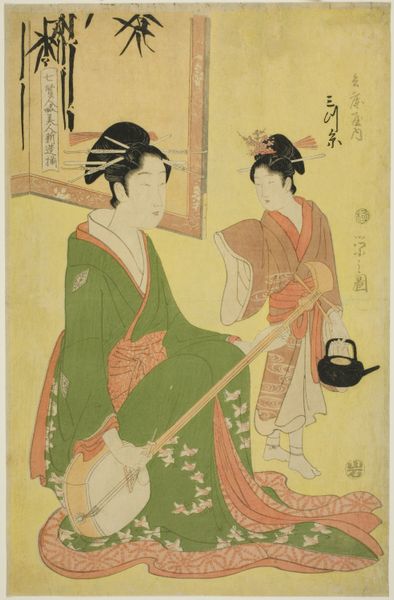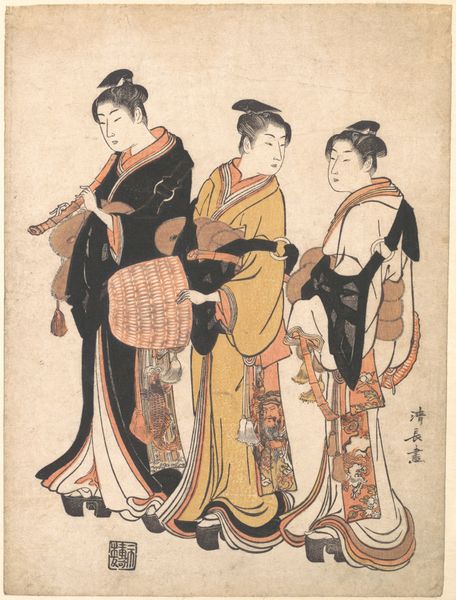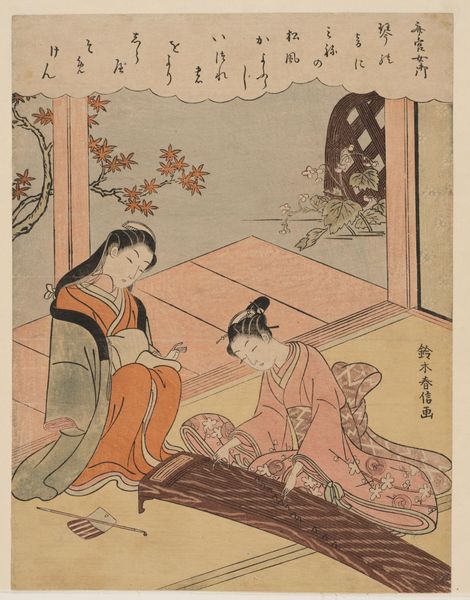
Twenty-four Japanese examples of filial piety for the Honchôren c. 1821
yashimagakuteiwudaoyueting
Rijksmuseum
print, woodblock-print
asian-art
ukiyo-e
figuration
woodblock-print
genre-painting
Dimensions: height 200 mm, width 181 mm
Copyright: Rijks Museum: Open Domain
Curator: Well, here we have a work by Yashima Gakutei, created around 1821. This color woodblock print, titled "Twenty-four Japanese examples of filial piety for the Honchōren," comes to us from the Rijksmuseum's collection. What strikes you about it at first glance? Editor: It feels like stepping into a very precisely orchestrated moment, like a tableau vivant about to begin or perhaps just ending. I'm drawn to the stillness, that held breath just before or after a significant action. There is something fragile, almost melancholic, about its delicacy and soft colors, which speaks volumes about a culture steeped in ritual. Curator: Filial piety, as the title suggests, was a crucial aspect of Japanese social structure during the Edo period, dictating moral responsibilities and familial duties. Prints like this circulated narratives meant to reinforce these societal values, becoming a popular genre with its roots in the older tradition of morality tales in painted handscrolls and books. Editor: Absolutely. The setting, the subdued palette—it all reinforces a sense of formality and decorum. But I also find it interesting how the composition, while clearly staging something for us, doesn’t feel overly didactic. We're witnessing an enactment, a carefully designed performance. This is less about telling a story, and more about communicating an atmosphere of respect, subtly hinting at complex social layers, while offering a glimpse into these women’s lives. The poetry adds yet another dimension, doesn't it? Curator: Precisely, Yashima Gakutei integrates a poem in the style of a Hokku that adds both the reference to celebration, "Asagayu", and layers of meaning. Considering it was designed for distribution among members of a poetry circle known as Honchōren is crucial. Its refined character and sophisticated design appealed to specific groups within Edo society interested in artistic and intellectual activities. Editor: What truly engages me is the humanity peeking through all that. Despite the evident intention to uphold values, the gestures, the gentle bows – you sense the genuine connections beneath the surface. It's a powerful reminder of how art can communicate on multiple levels, shaping behavior and expressing what goes unsaid. Curator: It gives one a new sense of what daily life and aspirations were during this time. Editor: Indeed, making us contemplate a bygone world in the simplest strokes of line and color.
Comments
No comments
Be the first to comment and join the conversation on the ultimate creative platform.
